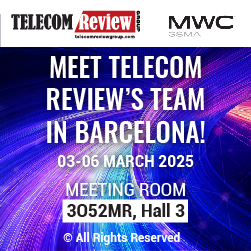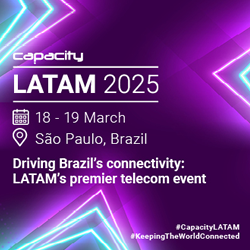Zayo was front and center at a groundbreaking ceremony in Reno, Nevada for middle mile solutions. The event was a celebratory kick-off for the Oregon-California-Nevada middle mile project, which will extend high-capacity connectivity to rural, underserved communities across a 420-mile route, enabling local ISPs to expand their operations.
The digital divide
Over 40 million Americans still lack home access to broadband Internet service, particularly in rural, remote, and sparsely populated areas. Reliable high-speed broadband is essential to life in the U.S. today, enabling virtual healthcare, remote work, online job searches, and digital learning, according to a sweeping 2023 research report by the Pew Charitable Trust.
At the recent Reno event, a key federal representative said bridging this digital divide is crucial to ensuring a more equitable and inclusive future.
“The pandemic put this dichotomy front and center. All of a sudden, we realized if you didn’t have access to high-speed Internet, it made life digitally inequitable compared to those who live in more urban areas,” said Sarah Bleau, director of the Middle Mile Program at the National Telecommunications and Information Administration (NTIA).
Broadband fuels the economy
This digital divide is hurting economic growth. The World Bank estimates that increasing broadband penetration by just 10 percentage points can boost real per capita GDP by as much as 1.2%. (That’s actually a big deal, since America’s per capita GDP grew by 2% in all of 2023.)
For rural communities, reliable, affordable broadband:
- means employers can offer remote and hybrid work, attracting more talent to their regions
- entices startups, entrepreneurs and large corporations to smaller communities, creating new jobs
- enables equitable learning opportunities
- allows local businesses to remain agile and competitive, providing the same level of service as their big city competitors
“It’s critically important both to solve the digital divide and then to build the engine of economic development going forward,” Andrés Irlando, President and COO of Zayo Group, told the audience at the Reno groundbreaking.
The middle mile is critical but why not close the gap by just building out broadband networks?
“We asked ISPs why they can’t go ahead and serve underserved locations in Nevada and elsewhere. And they said the fiber backhaul didn’t exist or it was completely unaffordable. So, for us, we knew the middle mile had to be a big part of our solution,” said Brian Mitchell, Director of the Governor’s Office of Science, Innovation and Technology at the Nevada State Broadband Office.
The middle mile connects the backbone of a broadband network to the ‘last mile’ between an ISP and customer. As Irlando explained in Reno, “if you don’t solve for the middle mile, forget talking about the last mile. There is no last mile without the middle mile.”
But building, installing and maintaining brand new infrastructure takes an incredible amount of planning, time, and money. In rural areas, lower population and user density make it hard for commercial ISPs to justify the cost of building new infrastructure.
Irlando pointed out that Zayo’s “Digital Equity Access Network (DEAN) is our architecture for making this all profitable for ISPs.” DEAN gives ISPs a plug-and-play way to connect to Zayo’s middle mile networks, plus pre-provisioned, dedicated fiber backhaul at competitive prices. All of that lowers the cost for ISPs to build out desperately needed middle mile networks.
Public-private partnerships
Collaboration between the public and private sectors helps middle mile projects get built faster and more efficiently. State agencies bring their unique knowledge of regional terrain and local regulatory standards to the table, all while ensuring public accountability for things like environmental impact, sustainability and community goals. Private sector partners like Zayo bring unique technical expertise to these projects, saving time, resources and precious tax dollars. Some private sector partners contribute excess capacity so the state doesn’t have to build all middle mile infrastructure from scratch. “Public-private partnerships have been critical to our strategy and our ability to help play a role in solving the digital divide,” Irlando said.
Building the middle mile is just plain impossible without federal funding. In 2023 the U.S. Department of Commerce pledged $930 million in grants to build over 12,000 miles of middle mile infrastructure across 35 states and Puerto Rico.
“The federal government stepped in to help industry make those business cases,” Bleau said at the groundbreaking ceremony. “It helps justify the cost to build out to these [rural] places so life can be more equitable for all and we can get to the goal of high speed and affordable Internet for all Americans.”
At the state level, Broadband Equity Access Deployment (BEAD) Program funds – providing $42.45 billion to expand high-speed Internet access by funding planning, infrastructure deployment and adoption programs across U.S. states and territories – provide additional opportunities for ISPs to bridge the digital divide with government funding. Zayo helps ISPs navigate this and other government funding opportunities through our zBIDA program.
How Zayo helps bridge the digital divide
- Zayo works with federal funding agencies and state stakeholders to build the middle mile and increase digital equity across the U.S.
- Zayo won a $93-million NTIA grant to help connect underserved communities.
- zBIDA (Zayo Broadband Infrastructure Deployment Alliance) helps ISPs tap into state and federal funding initiatives like BEAD (Broadband Equity Access Deployment) on projects to bridge the digital divide with middle-mile infrastructure, like the PEAK Internet project in Oregon with NTIA funding, Zayo is building new fiber connectivity across America, including increasing capacity from Dallas to Atlanta on an existing route, developing a brand new route from Dallas to El Paso, connecting 14 rural communities from Oregon-to-California-Nevada, and across the state of Nevada connectivity has been extended to more than 19,000 rural schools thanks to Zayo’s participation in the FCC’s E-Rate funding program.
Read More:
Zayo's Latest Upgrades Reinforce Leadership in Fiber Network Innovation
Nokia, Zayo Achieve New North American Transmission Record
Zayo's European Network Upgrade: 400G Speeds for the Digital Age











